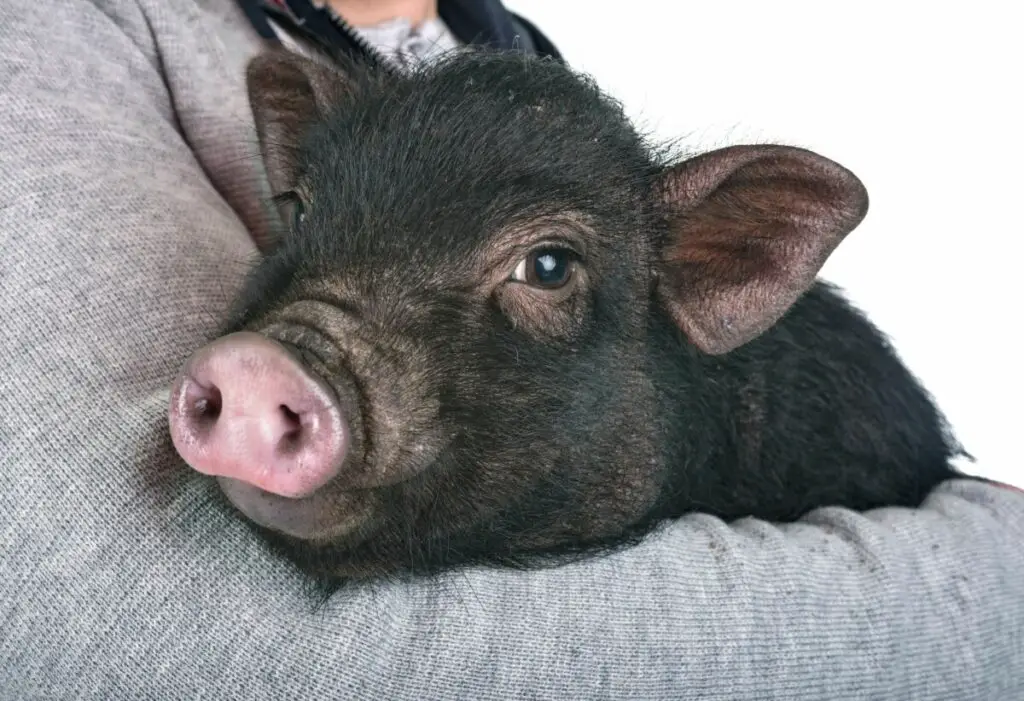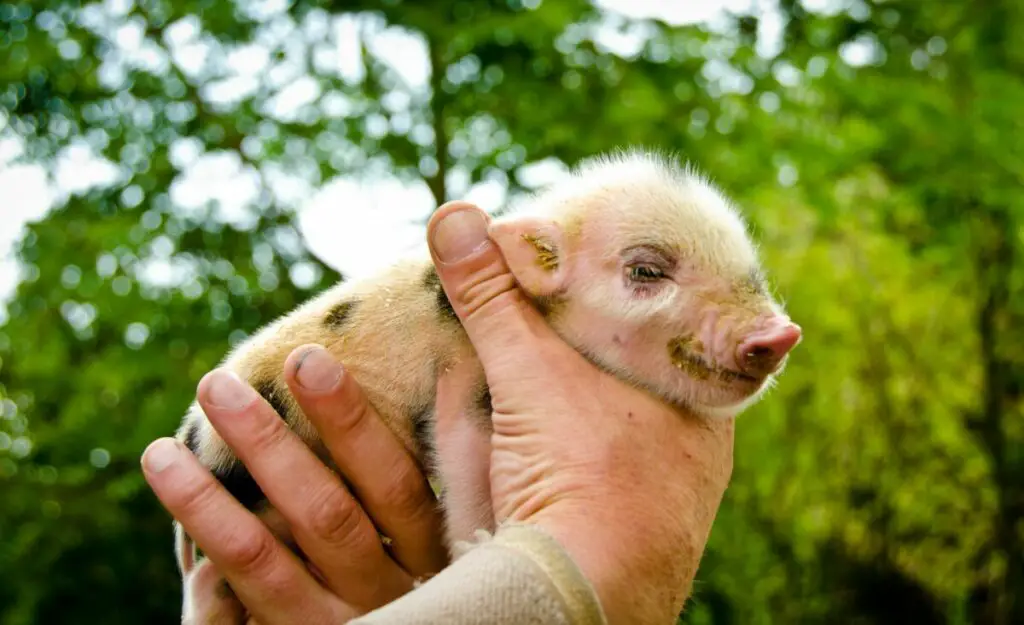
Potbelly pigs are an adorable addition to a family farm or homestead. This is especially true for baby potbelly pigs. However, with their cuteness comes great responsibility to understand how to best care for them, so how do you wean potbelly piglets?
An owner should wean potbelly piglets from their mother at 6-8 weeks old. These types of pigs develop quickly, so they reach maturity around 3 months old and should eat what the older potbelly pigs do at that point. However, they will continue to grow until they are around 6 years old.
Understanding when a potbelly piglet should be weaned is crucial to helping them develop correctly. Yet, there is much more that owners need to understand about their piglets. Some of these include how to wean potbelly piglets, what foods help their development, and what types of feed are recommended.
How to Wean Potbelly Piglets
Weaning baby pigs is a delicate process due to the fact that the food they intake heavily impacts their development. The process of weaning should begin when a piglet starts showing less dependence on the mother.
Oftentimes, piglets will begin to nurse less. This process can sometimes be sped up if a sow (or mother pig) is exhausted by feeding the whole litter. Some litters of piglets can range into the double digits, and a sow might struggle to produce enough milk for them at all times. Owners will take the most independent piglets and start by feeding them little bits of starter feed while allowing them to still nurse.
The beginning feed is important to consider because potbelly pigs require different nutrients and foods than farm hogs. It is important to make sure that the starter feed you give your potbelly piglets is the correct type. This can be done by reaching out to a veterinarian who is familiar with the breed for recommendations. Owners can start giving piglets this starter feed as early as 4 weeks after birth.
Once they are around 8 weeks old, they should be old enough to be taken from their mother and placed in a new enclosure. This is an incredibly stressful experience for the piglets, so it is best to create optimal conditions in this new enclosure for them. Optimal conditions would include a warm space of around 83 degrees Fahrenheit and soft bedding (either a type of hay or blankets and pillows).
After that, move the piglets gently to the new location. They have fragile bones, so try to pick them up carefully. Once they are in the new environment, help them eat some of the beginning feed. While they are still young, they are allowed to eat as much as they want. Owners often find success with putting the feed on a mat so the piglets can continue to eat together. Water is important to have available to the piglets as well, as they are used to a mostly-liquid diet.
As time goes on, the owner can continue to make differences in how the piglets are fed and experiment with different feed systems and feeds. The piglets will also start to show curiosity and intelligence that allows them to overcome obstacles and enjoy some change. Once they are a year old, they will need to have their food intake restricted gradually to about 1.5-2.5 cups of feed a day or about half a cup for every 25 pounds. An owner can give them nutritional snacks and treats along with their feed.

What Foods Help their Development?
The most important thing to remember when choosing feeds for young piglets is to make sure that the feed is similar nutritionally to the mother’s milk. Some starting feeds are commercialized to smell like sows’ milk and be easier for the piglets to transition to. After they have matured a little bit more, an owner can transition the piglets to a new type of feed that is better suited for their needs as young pigs.
It is important to note that potbelly pigs are naturally omnivores, so they also benefit from having fresh veggies, fruits, nuts, seeds, and other foods. Examples of good foods to feed potbelly pigs include carrots, cucumbers, broccoli, cauliflower, lima beans, sweet potatoes, corn, beans, and other vegetables that are high in fiber. Fruits should be a treat and should be high in fiber if possible. Some people even suggest that potbelly pigs enjoy and benefit from eating raw eggs.
There are also foods that will hinder the development of potbelly pigs of all ages. Foods that are highly processed usually contain excessive amounts of sugar and salt, which can cause obesity in pigs. Excessive amounts of fruits can also cause the same problem. Starchy foods are also bad for potbelly pigs because they can cause obesity as well as joint and foot pain. The following foods are dangerous for potbelly pigs to eat.
- Cabbage root and seeds
- Green Potatoes
- Apple Seeds
- Avocado skin and seeds
- Tomato leaves and vines
- Potato leaves, berries, or stem
- Chocolate
- Too many biscuits, fruit, or fruit juices
Overall, these are just general guidelines. Any specific inquiries about food choices, especially for potbelly pigs with health issues, should be brought up with a knowledgeable vet.
What Types of Feed are Recommended for Potbelly Pigs?
It is important to make sure that a person buys the correct type of feed for their potbelly pigs. Feeds for pigs generally are made to fatten pigs quickly, which is unhealthy for potbelly pigs. Some big brands that make potbelly pig feeds include Manna Pro and Mazuri (view products on Amazon). Feed for potbelly pigs is specifically marked and marketed for that breed. Owners should not be confused about whether or not the feed is good for their pigs. People can also attempt to make their own feed, but it is crucial to make sure that the feed has enough nutrients.
Now that all of this information has been clarified, owners of potbelly piglets will be able to wean their piglets effectively, give them the nutrients they need, and be aware of how to continually aid their development until they are fully grown.

